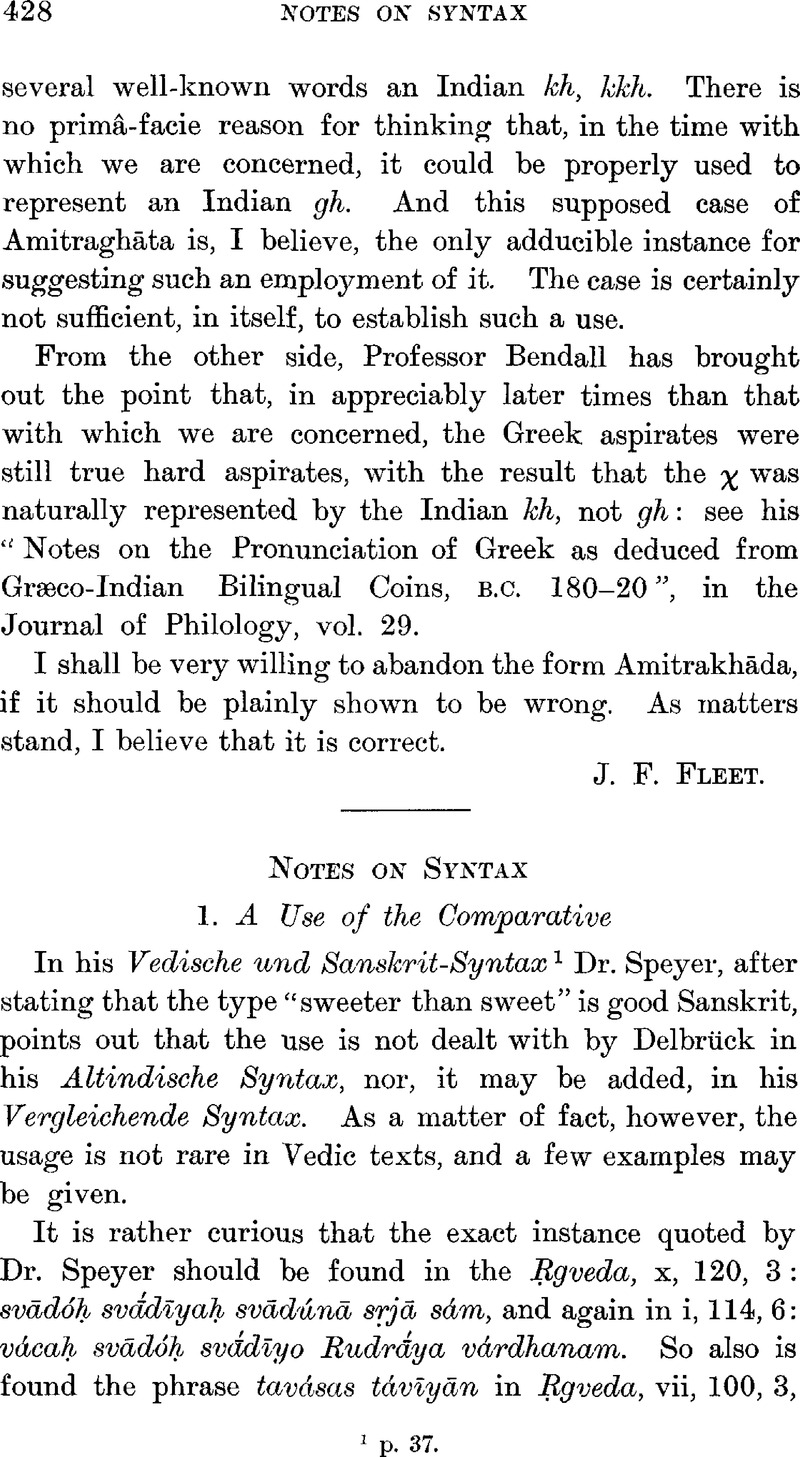No CrossRef data available.
Article contents
Abstract

- Type
- Miscellaneous Communications
- Information
- Copyright
- Copyright © The Royal Asiatic Society 1909
References
page 428 note 1 p. 37.
page 429 note 1 Cf. Macdonell, , Vedic Grammar, p. 296.Google Scholar
page 430 note 1 Contrast his rendering of Atharvaveda, iv, 32, 3,Google Scholar where tavásaḥ is treated as masculine. The accent, of course, is in favour of the masculine (cf. Whitney, , Sanskrit Grammar, § 1151Google Scholar), but that is not conclusive, as the rule is far from absolute.
page 430 note 2 Cf. Wackernagel, , Altindische Grammatik, ii, 1, 5.Google Scholar
page 431 note 1 Cf. Manu, , IX, 183,Google Scholarsarvās tas tena putreṇa putrinyo Manur abravīt; and Speyer, , Sanskrit Syntax, § 496.Google Scholar Cf. also the use of manye, etc.
page 431 note 2 Macdonell's, ed., ii, 176.Google Scholar
page 431 note 3 Vedische Studien, iii, 68.Google Scholar
page 432 note 1 I doubt if the St. Petersburg Dictionary, iv, 481, 495,Google Scholar is right in taking paraḥ prepositionally in Pāṇini, viii, 3, 4: anunāsikāt paro 'nusvāraḥ. The explanation of the Kāśikā Vṛtti, though awkward, is not surprising in Pāṇiniās style.
page 432 note 2 vii, 13 (in my Aitareya Āraṇyaka, p. 309Google Scholar).
page 432 note 3 JRAS., 1906, p. 540.Google Scholar
page 432 note 4 Speyer, , Vedische und Sanskrit-Syntax, p. 94.Google Scholar
page 432 note 5 Pischel, , Vedische Studien, i, 105Google Scholar seq. Some of his examples are doubtful, but this one is adequately certain, and the recognition of the principle of attraction is not the least of the services to Vedic scholarship of that admirable scholar, whose premature death has prevented the fulfilment of the work on the Rgveda.
page 432 note 6 See further my Aitareya Āraṇyaka, p. 225.Google Scholar


